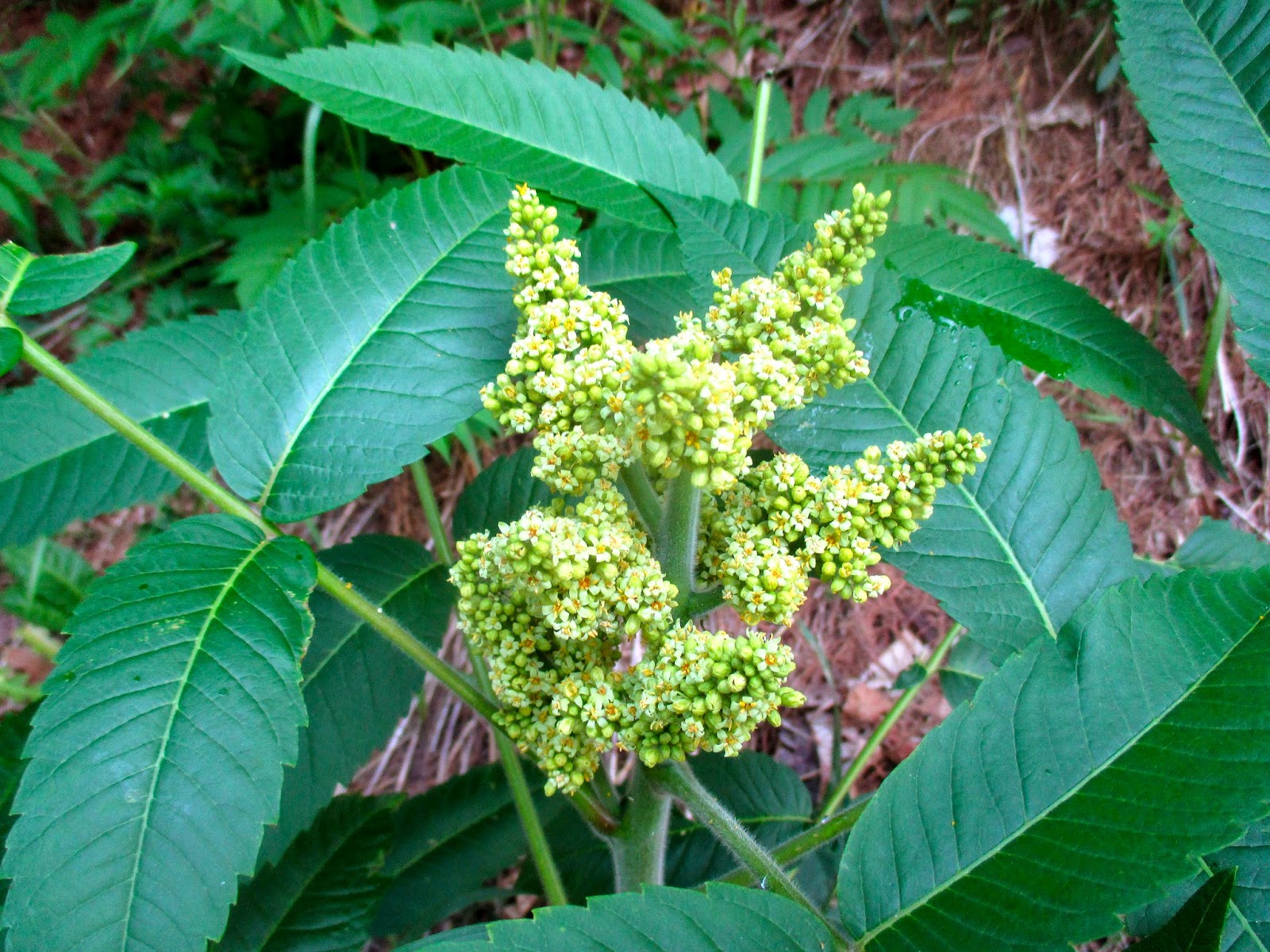 |
| SUMAC MALE AND FEMALE FLOWERS BOTH START OUT THE SUMMER YELLOW... |
 |
| ...EVENTUALLY THE FEMALE FLWOER SPIKES TURN PINK |
I am going to Ashland shortly to pick Buddy up from the kennel, where he spent his weekend. At the moment we are also taking care of Toto, our tenant's little cairn terror, since she is ill and in hospital for a day or two. We will have to see how the two dogs get along; buddy is very friendly but may be too rambunctious for a small, older dog.
We have been watching the stag horn sumac, Rhus typhina, flower spikes mature. Sumacs are in the cashew family, the Anacardiaceae. The flowers are mostly dioecious, being either male or female, and often also relegated to different plants. Both male and female flowers are initially golden yellow and very prominent, but as the summer progresses the female flower spikes turn first pink and eventually red-purple as the seeds mature. The stag horn sumac and the smooth sumac, R. glabra, often hybridize. In general the smooth sumac is a more southern, the staghorn a more northern, species. The genus Rhus also contains pioson ivy, R. radicans, and poison sumac, R vernix. The former is mostly a climbing vine and the later only grows in swamps, so neither is very likely to be confused with the sumacs, which form large clones on dry and rocky hillsides and similar locations. As far as I know the sumacs are not at all poisonous, and the ripe berries have a rather pleasant, lemony taste in one's mouth although I wouldn't swallow the hard little fruits. A number of sumac species are used to manufacture fine varnishes, and the yellow wood for dye.
Sumacs have wonderful fall foliage colors, brilliant pinks, oranges, yellows and reds, and are worth having in the landscape for that reason alone, but they are very aggressive and grow very large and have to be used with care, usually in the large, naturalized landscape.











No comments:
Post a Comment